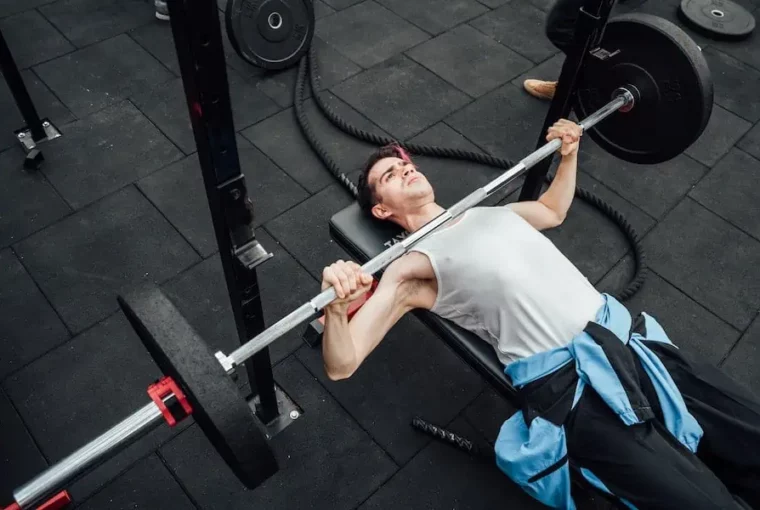When it comes to building strength and sculpting your upper body, the dip bar is an incredibly versatile and effective piece of equipment. Dip bars provide an excellent platform for performing various exercises that target your triceps, chest, shoulders, and core muscles. By incorporating a dip bar workout routine into your fitness regimen, you can enhance your overall strength, improve muscle definition, and increase upper body stability.
In this blog post, we will guide you through the process of creating a complete dip bar workout routine. Whether you’re a beginner or a seasoned fitness enthusiast, we’ll cover everything you need to know to design an effective and well-rounded dip bar workout that suits your goals and fitness level.
Warm-Up Exercises
Before diving into the core of your dip bar workout routine, it’s essential to warm up your muscles to prevent injuries and prepare them for the upcoming intensity. Start your warm-up with five to ten minutes of light cardio exercise, such as jogging or jumping jacks, to elevate your heart rate and increase blood flow to your muscles. Next, incorporate dynamic stretches, focusing on your upper body, such as arm circles, shoulder rolls, and chest stretches. These movements will help improve your range of motion and loosen up any tightness.
Basic dip exercise
The tricep dip exercise is the foundation of any dip bar workout routine. It primarily targets the triceps, chest, and shoulders while engaging the core for stability. To perform a dip, grip the parallel bars with your palms facing down and your arms fully extended. Keep your chest up, shoulders back, and elbows slightly bent. Lower your body by bending your elbows until your upper arms are parallel to the floor, then push yourself back up to the starting position. Aim for three sets of 10-15 repetitions, gradually increasing the intensity as you progress.
Variations and progressions
Once you have mastered the basic dip exercise, it’s time to incorporate variations and progressions to continually challenge your muscles and stimulate growth. Here are a few options to consider:
- Weighted dips: Add additional resistance by wearing a weight belt or holding a dumbbell between your feet or thighs. Start with a manageable weight and gradually increase it over time to avoid strain.
- Incline or decline dips: Adjust the angle of your body to target different muscle groups. Incline dips shift the focus onto the upper chest, while decline dips place more emphasis on the lower chest and triceps.
- L-sit dips: Elevate the difficulty level by performing dips while keeping your legs extended in an L-shape position. This variation engages your core muscles more intensely.
- Muscle-up progression: Once you’ve built enough strength, you can progress to muscle-ups. Begin with explosive pull-ups, transitioning into the dip position while maintaining control and stability.
Supplementary exercises
To create a well-rounded dip bar workout routine, it’s important to include supplementary exercises that target different muscle groups and promote overall strength and stability. Here are some exercises to incorporate:
- Push-ups: An excellent exercise to complement dips, push-ups target the chest, triceps, and shoulders. Vary your hand placement, such as wide or narrow, to engage different muscle fibers.
- Pull-ups: While primarily targeting the back and biceps, pull-ups also engage the muscles of the shoulders and core. Use an overhand grip for traditional pull-ups or an underhand grip for chin-ups. You can also add extra resistance and do weighted pull ups.
- Hanging leg raises: This exercise targets the lower abs and hip flexors. Hang from the dip bar and raise your legs to a 90-degree angle, focusing on maintaining control and engaging your core muscles throughout the movement. Lower your legs back down with control and repeat.
- Dips with knee raises: Combine the dip exercise with knee raises to target your triceps, chest, shoulders, and core simultaneously. Perform a dip, then lift your knees towards your chest while maintaining stability and control. Lower your knees back down and repeat.
- Tricep dips: Position your hands close together on the dip bars with your palms facing inward. Keep your elbows tucked in as you lower your body down, targeting the triceps more specifically.
- Russian twists: Sit on the dip bar and lean back, holding onto the bars for stability. Lift your legs off the ground and twist your torso from side to side, engaging your oblique muscles.
- Leg assisted dips: If you’re a beginner or still working on building upper body strength, you can use your legs to assist with the dip exercise. Place your feet on the ground and use them to push off as needed.
Rest and recovery
Rest and recovery are vital aspects of any circuit training routine. Make sure to incorporate rest days into your schedule to allow your muscles to repair and grow stronger. Aim for at least one to two days of rest per week, alternating your dip bar workouts with other forms of exercise or focusing on different muscle groups.
Additionally, pay attention to your body’s signals and adjust the intensity and frequency of your workouts accordingly. If you experience excessive muscle soreness or joint pain, it’s important to give yourself adequate rest and consult with a healthcare professional if necessary.
Conclusion
Incorporating a dip bar workout routine into your fitness regimen can significantly improve your upper body strength, muscle definition, and overall stability. By following the steps outlined in this blog post, you can create a complete dip bar workout routine that targets various muscle groups and caters to your fitness level.
Remember to warm up properly, start with the basic dip exercise, and gradually progress to more challenging variations and supplementary exercises. Allow for adequate rest and recovery, and always listen to your body to avoid overexertion or injury.
So, grab those dip bars, set your goals, and get ready to experience the incredible benefits of a well-designed dip bar workout routine. Your upper body will thank you for it!




